Tuberculosis (TB), with an estimated incidence of 10 million people every year (range 8.9–11.0 million), is a major cause of ill health and one of the leading causes of death worldwide. Until the coronavirus disease (COVID-19) pandemic, TB was the leading cause of death from a single infectious agent, ranking above HIV, with an estimated 1.2 million TB deaths among people who are HIV-negative (range, 1.1–1.3 million), and an additional 208 000 deaths among people who are HIV-positive (range, 177 000– 242 000).
 Feedback
Feedback